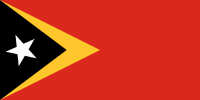 List of Insurance Companies Logos and Name in East Timor – World insurance companies logos. Click on the insurance company logos to get a bunch of up-to-date information offered to every insurer. We want to help you to find the best insurance on the Internet.
List of Insurance Companies Logos and Name in East Timor – World insurance companies logos. Click on the insurance company logos to get a bunch of up-to-date information offered to every insurer. We want to help you to find the best insurance on the Internet.
List of Insurance Companies Logos and Names in Timor
List of Insurance Companies Logos and Names in Timor. A logo is immediately recognizable as synonymous with the brand and allows the client to associate the insurance company with the useful qualities such as trust, the right price, and many other vital issues about finding the best insurance. Click on each logo for much vital information to select the best insurer.
- All
Economy in Timor
The economy of this Nation is ranked as a low income economy by the World Bank. It is placed 158th by Human Development Index, indicating a low level of human development. 20% of the population is unemployed, and 52.9% live on less than US $1.25 a day. About half of the population is illiterate.
According to data gathered in the 2010 census, 87.7% of urban and 18.9% of rural households have electricity, for an overall average of 36.7%.
The country continues to suffer the after effects of a decade-long independence struggle against Indonesia, which damaged infrastructure and displaced thousands of civilians.
In 2007, a bad harvest led to deaths in several parts of the country. In November 2007, eleven subdistricts still needed food supplied by international aid.
Oil and gas
One promising long-term project is the joint development with Australia of petroleum and natural gas resources in the waters southeast of East Timor.
Timor-Leste inherited no permanent maritime boundaries when it attained independence, repudiating the Timor Gap Treaty as illegal. A provisional agreement (the Timor Sea Treaty, signed when the region became independent on 20 May 2002) defined a Joint Petroleum Development Area (JPDA), and awarded 90% of revenues from existing projects in that area to Timor and 10% to Australia.The first significant new development in the JPDA since Timorese independence is the largest petroleum resource in the Sea, the Greater Sunrise gas field.
Its exploitation was the subject of separate agreements in 2003 and 2005. Only 20% of the field lies within the JPDA and the rest in waters not subject to the treaty (though claimed by both countries). The initial, temporary agreement gave 82% of revenues to Australia and only 18% to Timor-Leste.
The government of Timor-Leste has sought to negotiate a definite boundary with Australia at the halfway line between the countries, in accordance with the United Nations Convention on the Law of the Sea. The government of Australia preferred to establish the boundary at the end of the wide Australian continental shelf, as agreed with Indonesia in 1972 and 1991. Normally a dispute such as this would be referred to the International Court of Justice or the International Tribunal for the Law of the Sea for an impartial decision, but the Australian government had withdrawn itself from these international jurisdictions (solely on matters relating to maritime boundaries) shortly before Timorese independence.
Nevertheless, under public and diplomatic pressure, the Australian government offered instead a last-minute concession on Greater Sunrise gas field royalties alone. On 7 July 2005, an agreement was signed under which both countries would set aside the dispute over the maritime boundary, and Timor would receive 50% of the revenues (estimated at A$26 billion or about US$20 billion over the lifetime of the project) from the Greater Sunrise development.
Other developments within waters claimed by Timor-Leste but outside the JPDA (Laminaria-Corallina and Buffalo) continue to be exploited unilaterally by Australia, however.
Some proceeds from Timor’s petroleum royalties directly to the country’s sovereign wealth fund, the Timor-Leste Petroleum Fund.

